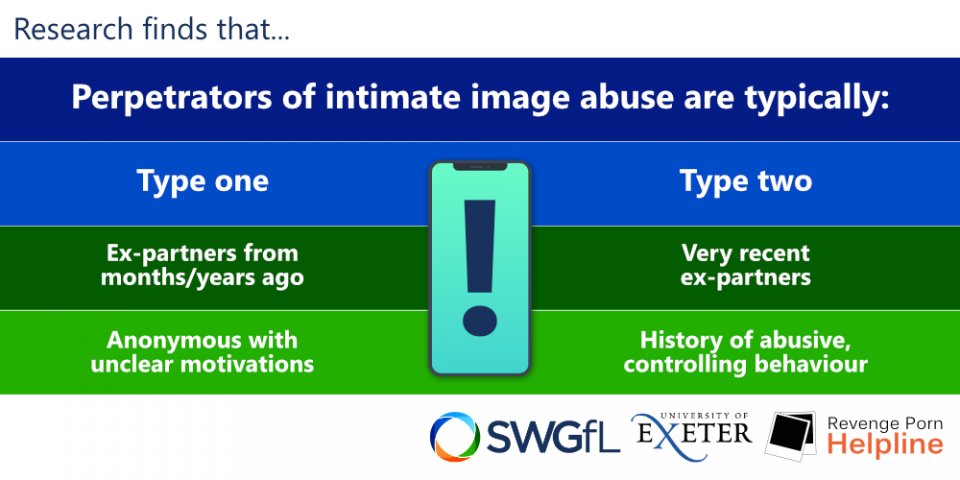- Study by University of Exeter shows almost 3 in 4 victims are female
- 9 out of 10 female victims suffer intimate image abuse
- 9 out of 10 male victims suffer sextortion
Research funded by the Economic and Social Research Council (ESRC), as part of a collaboration between the University of Exeter, the Revenge Porn Helpline and Professionals Online Safety Helpline, has revealed a striking gender disparity in intimate image abuse crimes and calls for policy “to acknowledge this crime as a gendered, sexual offence”.
Based on data from the helplines, both operated by the South West Grid for Learning, the research explores the differing experience of men and women, and adults and young people, as victims of intimate image abuse. The main finding of the study shows that a disproportionate number of victims are female and that the crime is perpetrated in different ways according to the victim’s gender.
73% of callers to the Revenge Porn Helpline were female, 97% of whom reported intimate image abuse. Conversely, out of the 27% of male callers, 90% were the victims of sextortion.
What is revenge porn? Revenge porn can generally be broken down into two categories. Intimate image abuse – most commonly occurs following the dissolution of a romantic relationship as a way in which to control the victim or ‘punish’ them for leaving. Sextortion – involves using sexually explicit content to financially blackmail victims and can be carried out by hackers or criminal gangs. |
Both incidence and awareness of revenge porn crimes have increased since the Criminal Justice and Courts Act, 2015 made “the distribution of a private sexual image of someone without their consent and with the intention of causing them distress” a specific criminal offence. Several high-profile cases have been publicised in the media in recent years, including those involving celebrities and public figures.
Further findings in the research included that intimate image abuse can be categorised into two distinct ‘types’. Type one perpetrators are ex-partners from months, or even years, ago and share images anonymously with motivations unknown. Type two perpetrators are very recent ex-partners, often displaying a long history of abusive and controlling behaviour towards their victims.

It was not just in perpetration and victimisation that a gender imbalance was evident. Male victims of sextortion reported feeling little shame and self-blame and were able to move on quickly from their experiences. Female victims of intimate image abuse, on the other hand, reported much longer-lasting social and emotional impacts, describing their experiences as sexually violating.
Elena Sharratt, PhD candidate at the University of Exeter and helpline practitioner at SWGfL, commented:
“The current laws surrounding intimate image abuse fail to acknowledge this crime as a gendered, sexual offence. Policy needs to be simplified and barriers to prosecution removed, including ‘the intention to cause distress’ as a prerequisite for prosecutions. Great strides have been made in recognising the severe social and mental harm intimate image abuse and sextortion can cause victims, but we need to do more before the legal process can be said to adequately support victims.”
Read the full research report to learn more about trends in intimate image abuse.
If you have been a victim of intimate image abuse and require free, non-judgemental, and confidential advice and support, contact the Revenge Porn Helpline.
0345 6000 459 (Mon-Fri 10am to 4pm) | help@revengepornhelpline.org.uk






